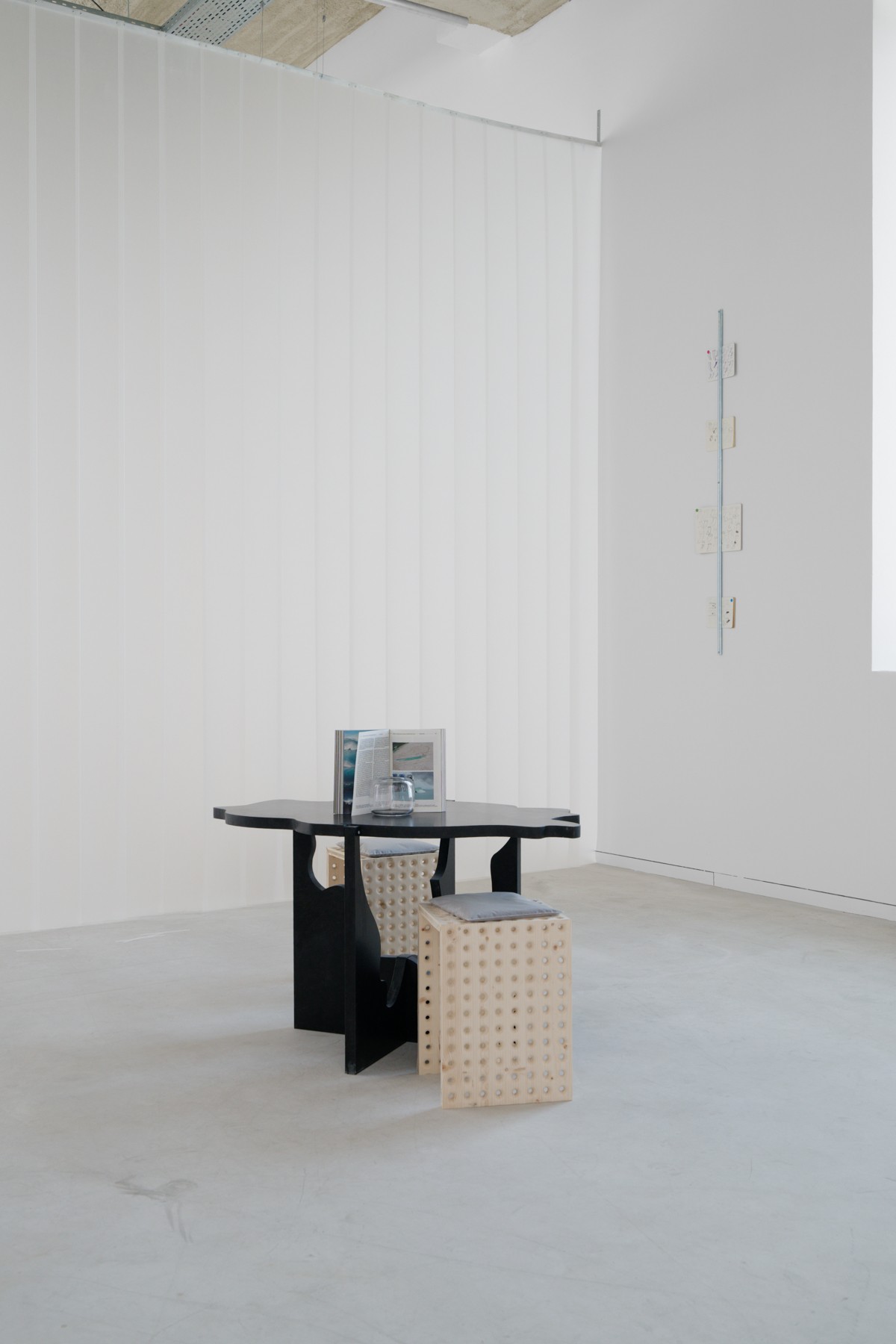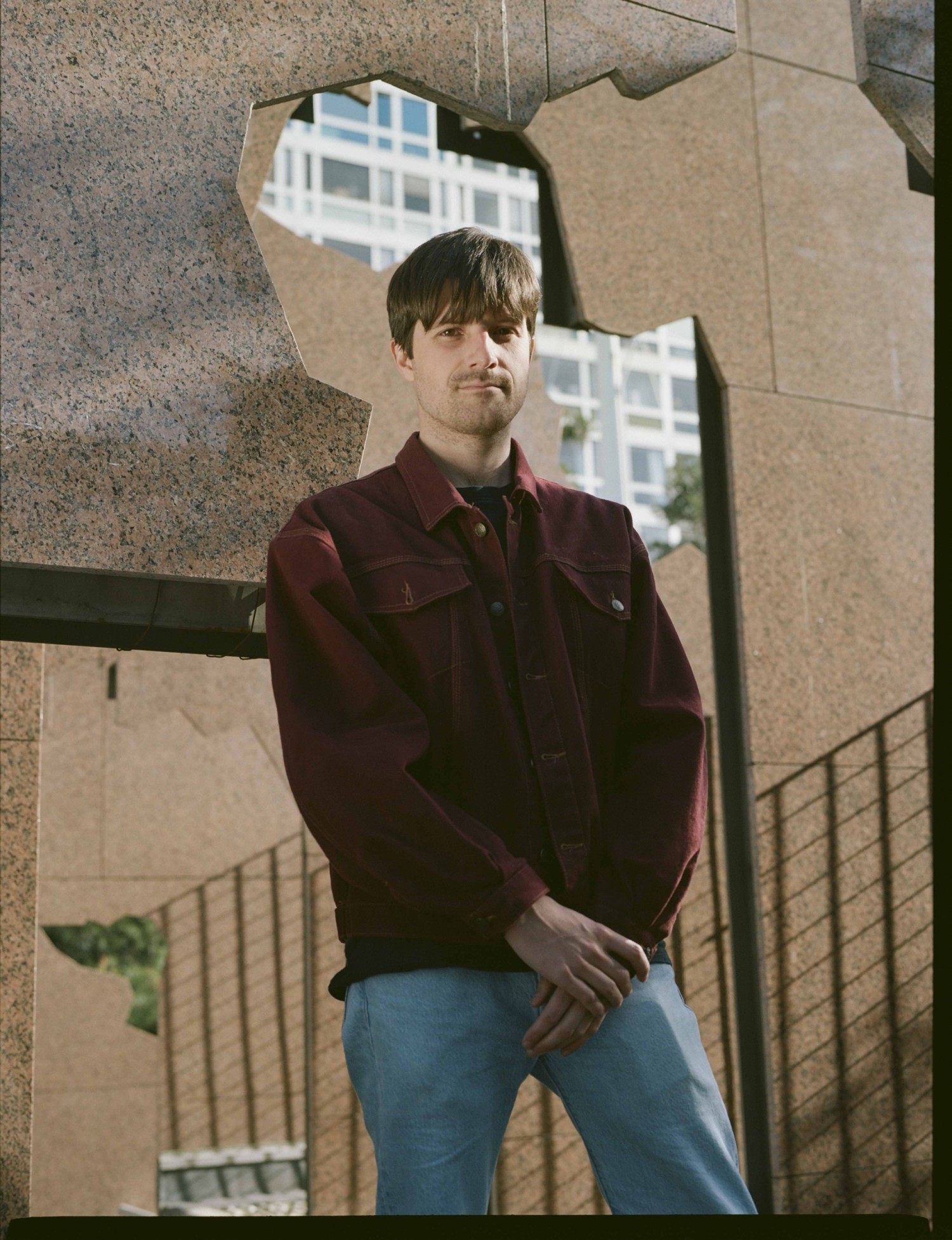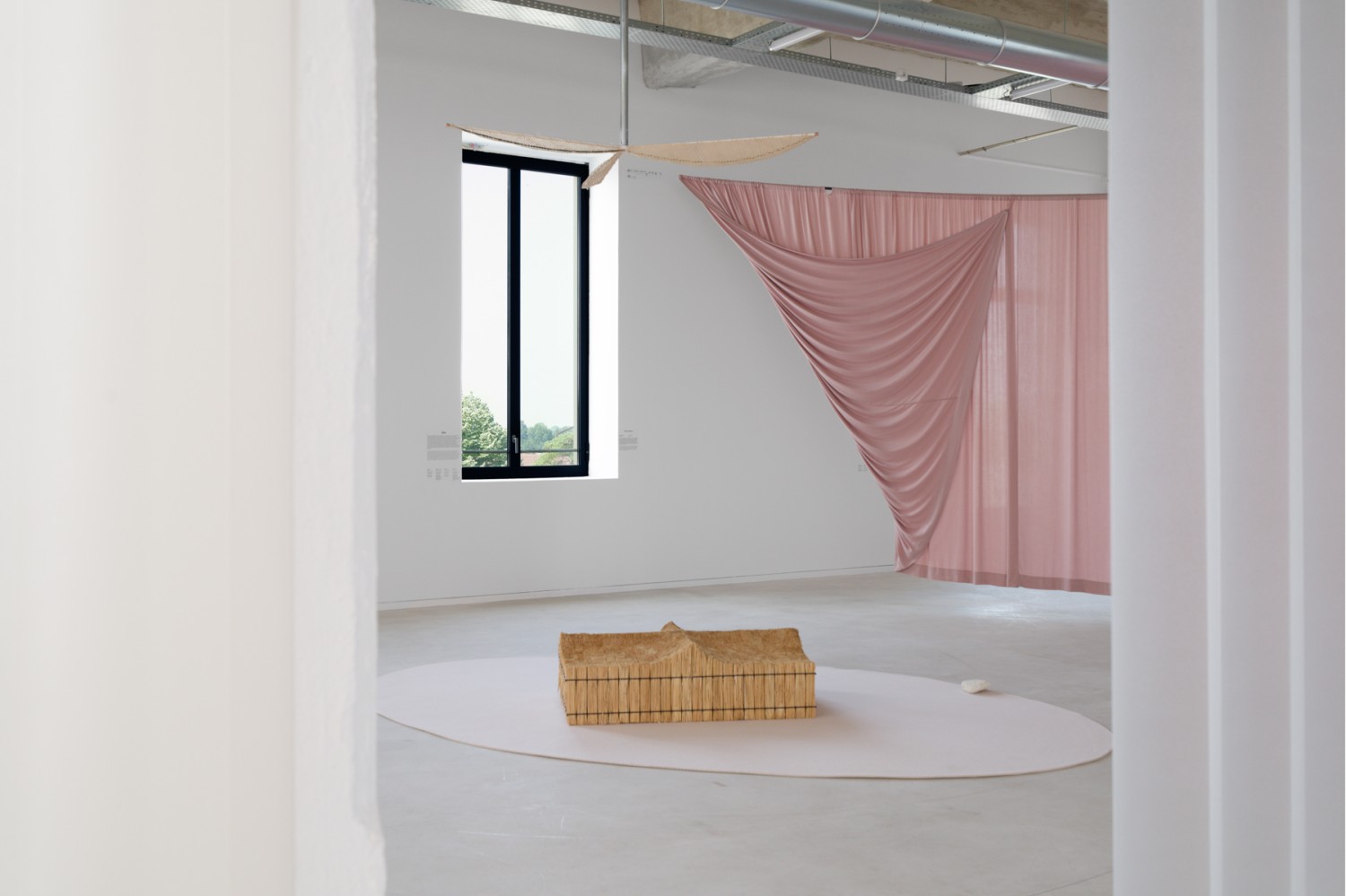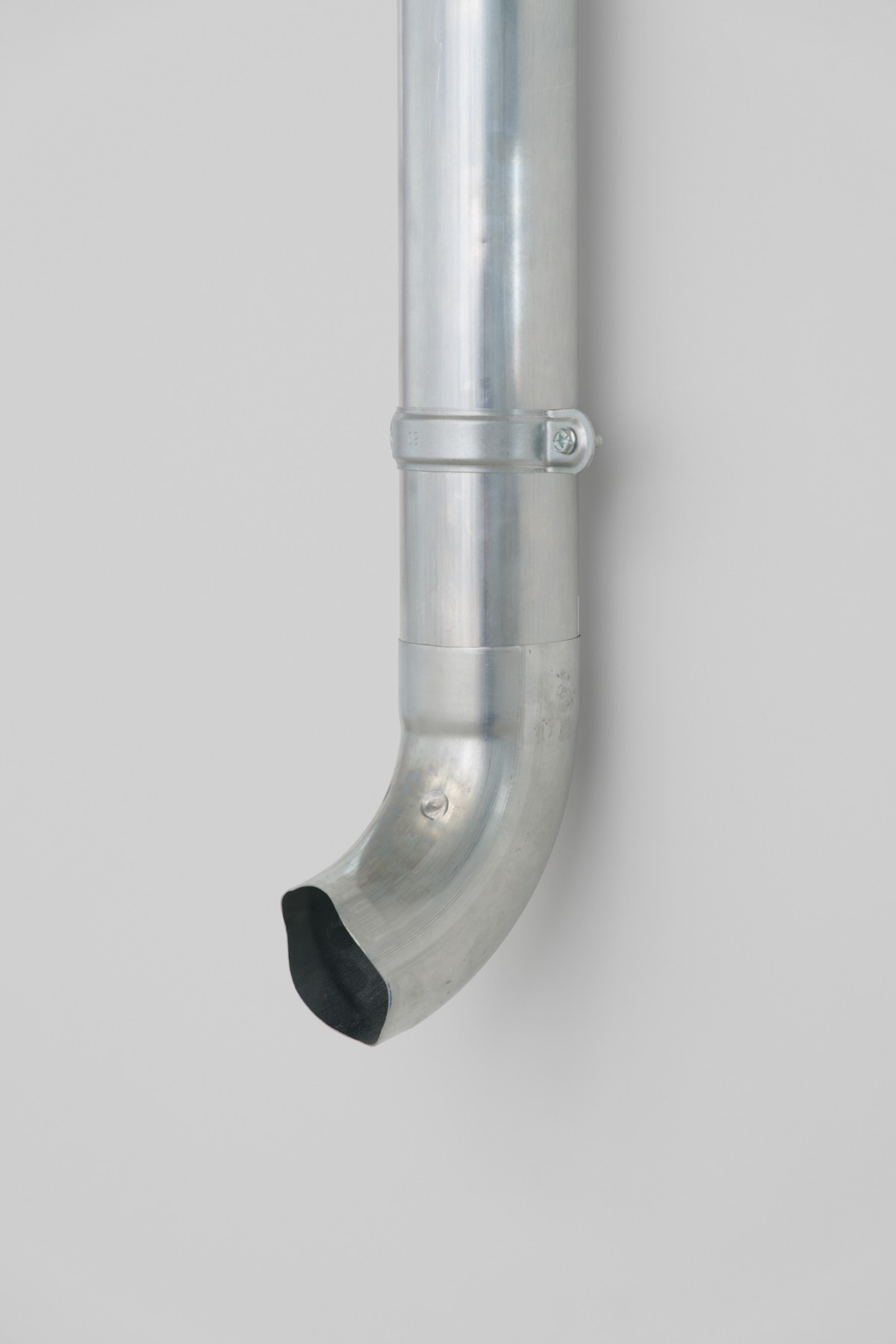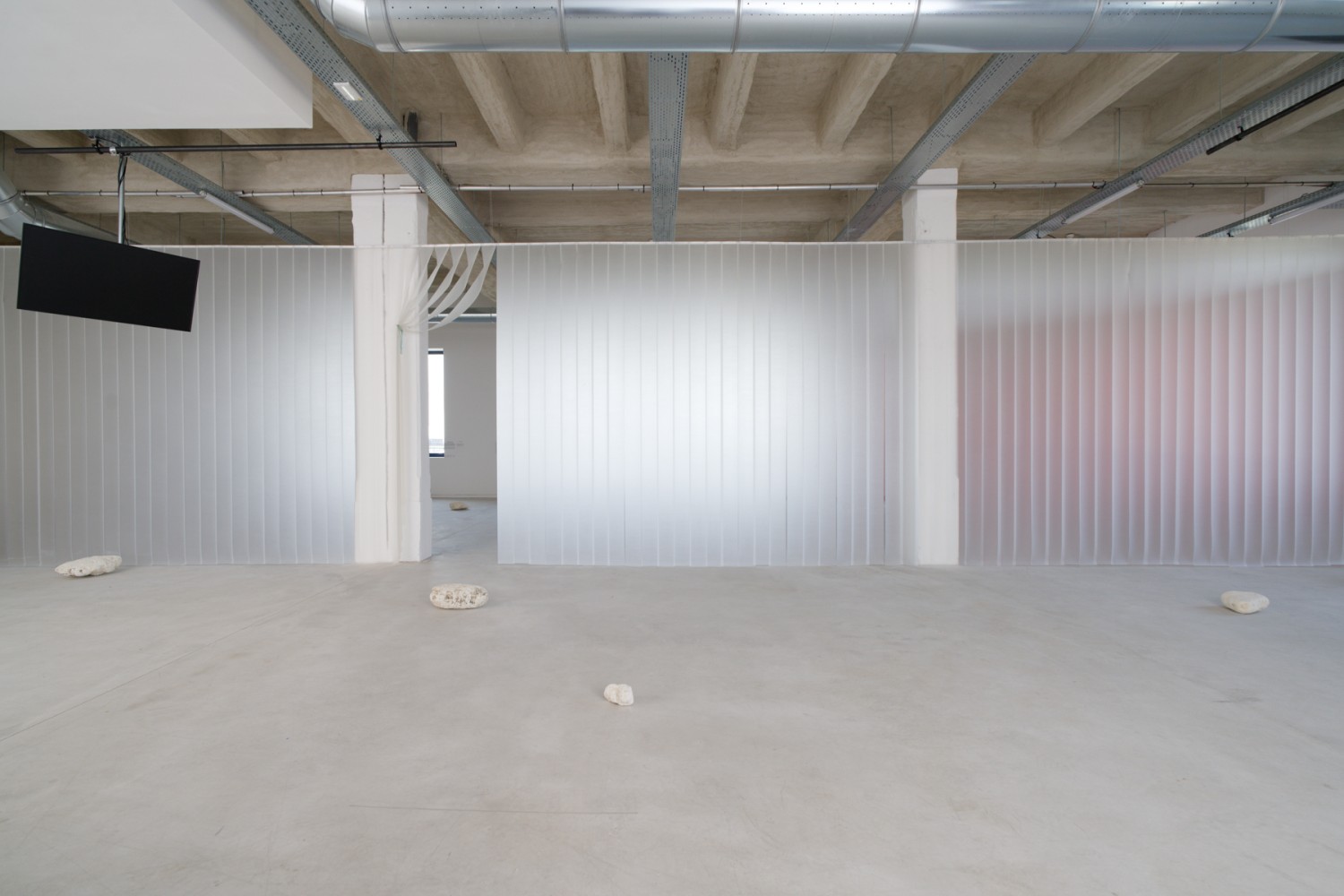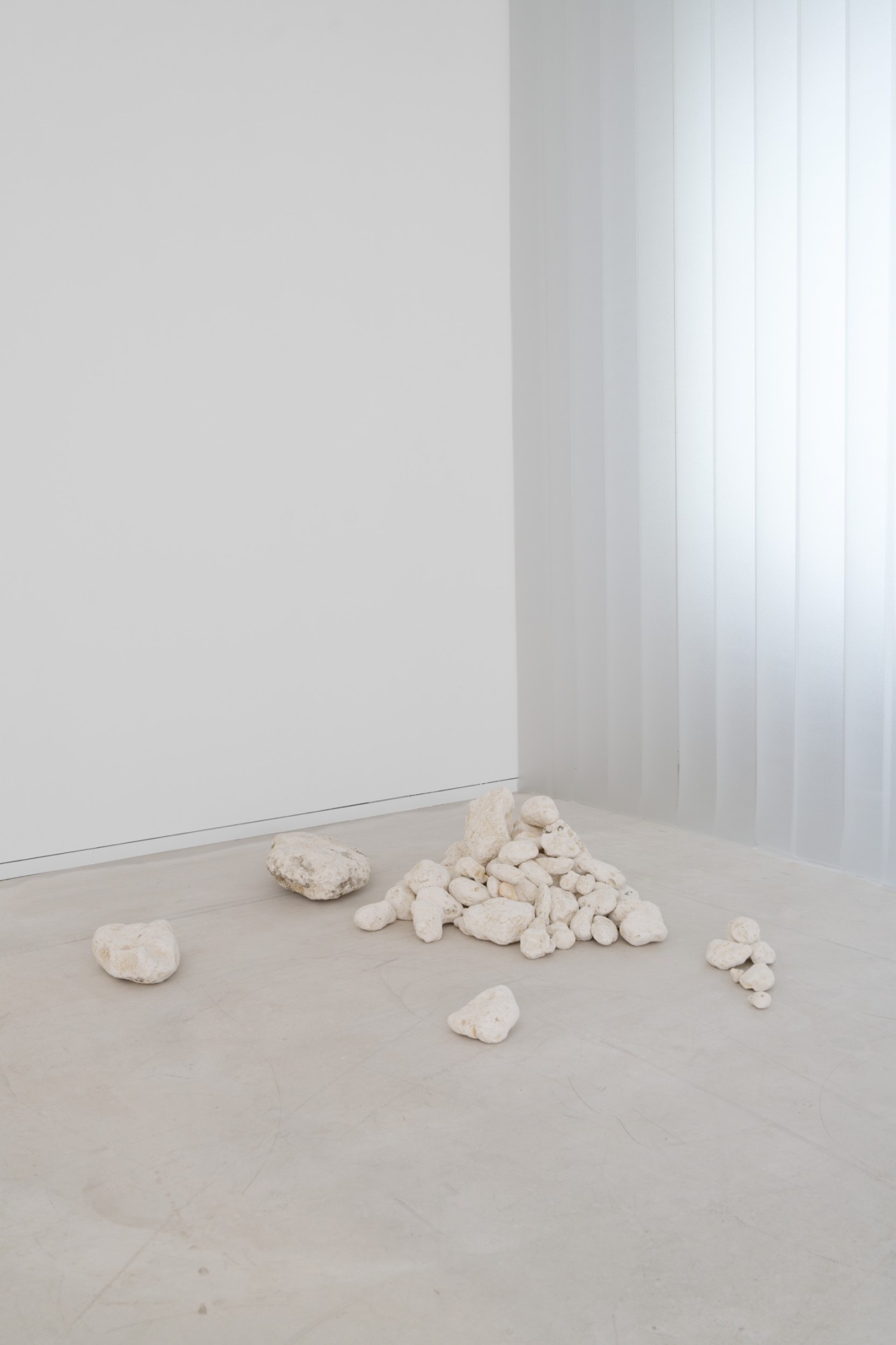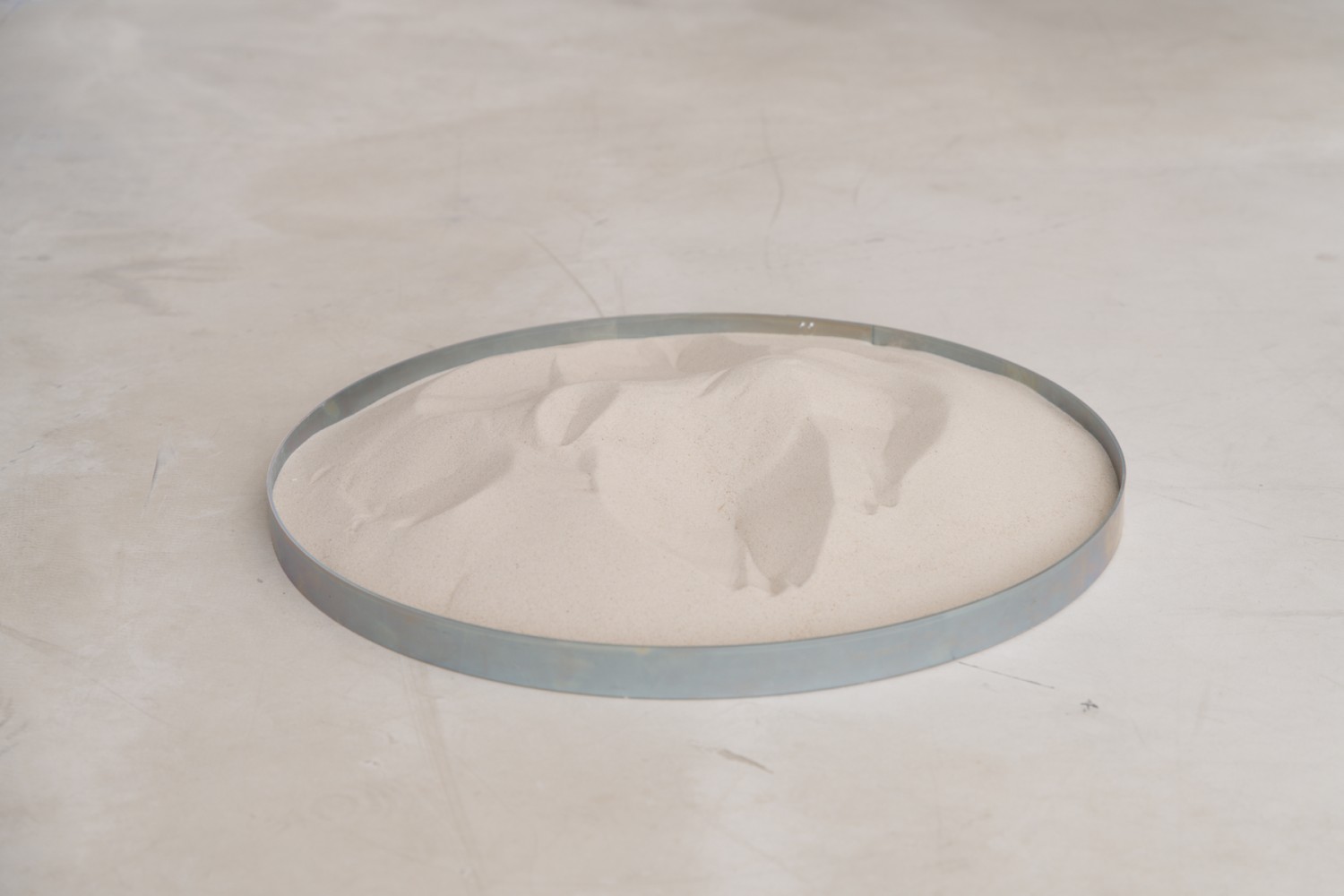At the Martell Corporate Foundation, until 4 January 2026, designer Pablo Bras presents “Hors Saison”, an exhibition that explores invisible matter: air, light and temperature. Conceived as an evolving environment, his project responds to the seasons and the climate of the location. Combining design, architecture and sensory experimentation, Pablo Bras offers a different way of inhabiting space, curated by Olivier Zeitoun, curator in the Design Department of the Musée National d’Art Moderne/Centre Pompidou.
How does your approach to design in Hors Saison renew our perception of immaterial elements such as air, light and temperature?
It’s a fairly porous practice with forms of plastic expression that are freer than what is sometimes imposed (or was imposed?) by a certain idea of design. This is partly by default, as I learned my craft from visual artists and my working method combines aesthetic and technical criteria, but it is also by choice, because given the subjects I deal with, I feel it is important to retain a touch of the baroque or, at the very least, a strong element of subjectivity in the creative process, as a safeguard against technical determinism, whether technosolutionist or technophobic. I also try to incorporate social criteria into my work, but in my case these are embodied less in the themes addressed than in the working relationships, the production process, and how objects or spaces are “made”.
How do invisible elements become material to be designed, experimented with, or even manufactured?
There is an ancient Greek phrase, taken up by the philosopher Whitehead, which inspires me greatly and which says that ’everything flows’. This means that even a piece of rock or a precisely cut sheet of steel continues to overflow beyond our perception. That objects somehow ’overflow’ even when we can’t see them. In this logic, a table is simply a moment in a larger process, and the distinction between tangible matter and invisible phenomena becomes quite thin. One of the ideas of the exhibition is to inscribe these two emergences — that of forms and that of flows — within the same continuum.
How did the exhibition venue in Cognac influence your project?
During my first visit, what struck me most was the exhibition venue itself, its history… It’s a space that impresses when you visit it and inspires when you exhibit there: a vast 300 sqm platform pierced by large windows that flood the space with light. As the project took shape with curator Olivier Zeitoun, the exhibition space and the duration of the show became central. Architectural gestures were made according to the space’s own volumes, and objects were selected based on its future visitors and the various issues that come with that: rhythms, uses, security, etc. So the historic building is much more than a backdrop onto which a message is projected; it becomes, in a way, its own subject, and the boundary between objects showing and objects shown is abolished. To reinforce this impression, I blended into the building’s aesthetic by borrowing some finishing techniques, which helped to blur the distinction between what was already there and what has only been there since Hors Saison.
Your work offers a different idea of comfort, closer to the seasons and real needs. Why is this important to you?
There is one way of thinking about technology that seeks to make an existing device more efficient, and there is another way that consists of questioning the object that we are trying to make efficient. It’s about de-naturalising it by saying, ’After all, the function of heating is not necessarily performed by a radiator, but by a piece of metal heated and bent in this way.’ The first approach attempts to optimise existing typologies, at the risk of them becoming ecologically obsolete, while the other seeks to bring about new types. It is this second option that I am trying to explore in the exhibition. I’m not trying to do ’better,’ but simply to reopen the range of possible types of objects, and I think the ’frog’ is a good example of this: it starts with the material and its physical properties to influence our uses, rather than the other way around.
photos : A water-cut granite table, milled wooden stools and grape seed cushions make up the reading room • Pablo Bras © Louise Desnos • 360 Straws, a rye straw seat designed and produced with Violette Vigneron • Pellet shovel made of galvanised steel • Since its introduction, the main exhibition space has been visible behind large opalescent PVC panels borrowed from the thermal partitions used in food processing and industrial sites • Exhibition details: limestone with high thermal effusivity and PVC strips. Exposition Hors Saison, Pablo Bras © Pauline Assathiany • Hydraulic wind turbine made from recycled spinnaker fabric and aluminium angle brackets from the Pavillon des rêves project
